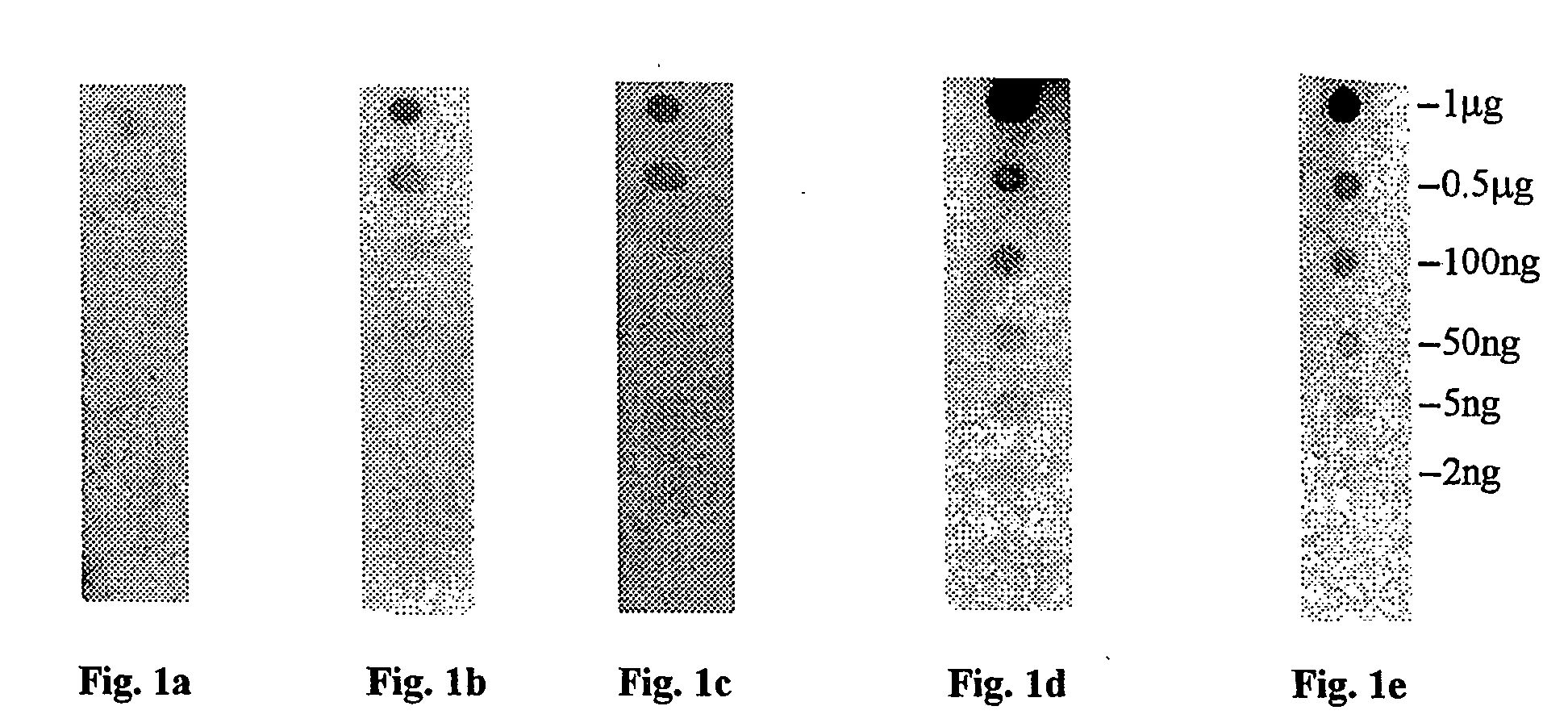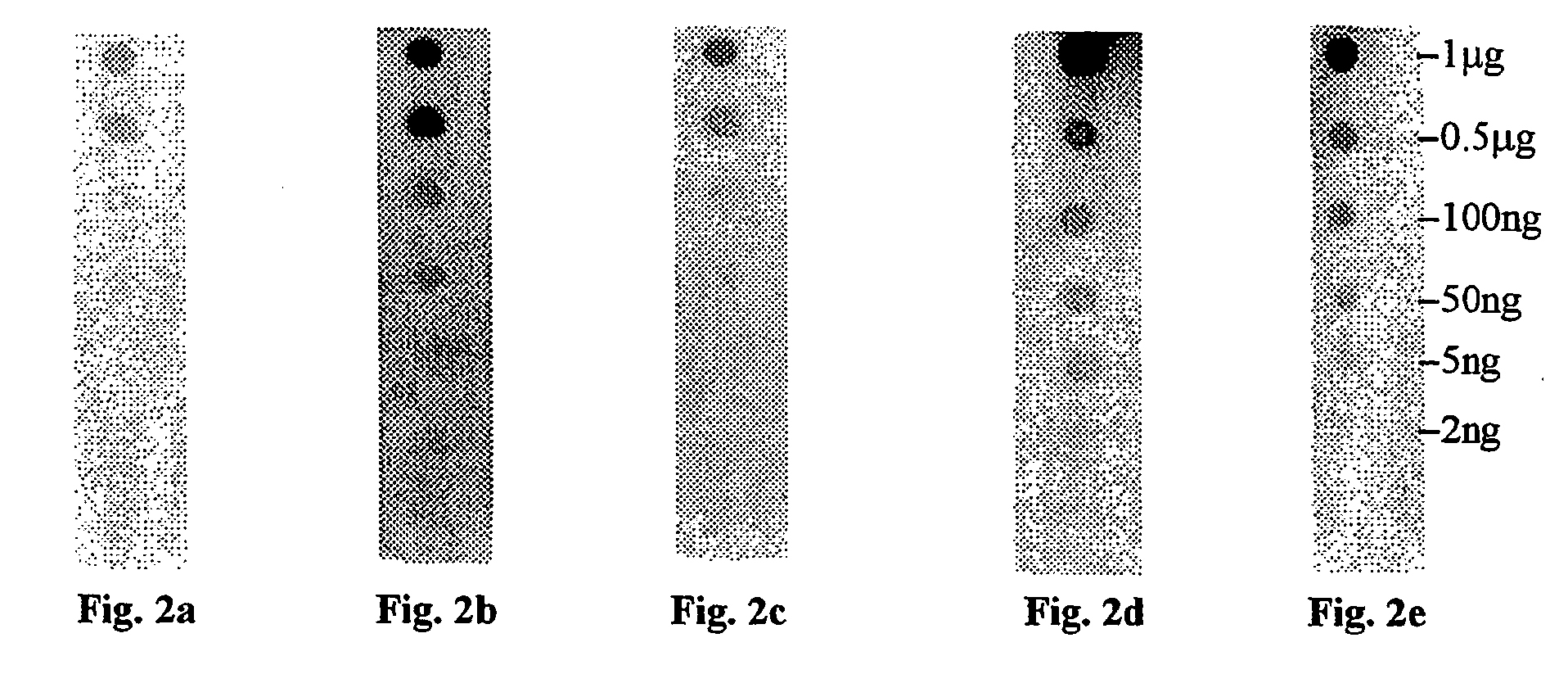Method of visualizing proteins bound to protein-binding membranes
a protein and membrane technology, applied in the field of detection/visualization of proteins bound to a protein-binding membrane, can solve the problems of nylon membranes that are incompatible with stains such as amido black 10b and coomassie blue, and low sensitivity of stains
- Summary
- Abstract
- Description
- Claims
- Application Information
AI Technical Summary
Problems solved by technology
Method used
Image
Examples
example 1
Comparison of Different Staining Methods
[0106] Membranes of three types (PVDF, nitrocellulose, and nylon) were prepared by cutting into strips (1 cm×8 cm). Each of the membrane strips were spotted with 1 μL spots of bovine serum albumin (BSA) in a series of amounts comprising: 2 ng, 5 ng, 50 ng, 10 ng, 500 ng and 1000 ng of protein. Due to the hydrophobic nature of the PVDF membrane, the protein solution for spotting of the PVDF membrane was mixed with an equal volume of caprolactone before spotting.
[0107] Each membrane of each composition was then stained with one of a group of five staining compositions selected as follows:
[0108] One membrane of each composition was stained using ponceau S. In this procedure, the membrane was incubated in solution with a concentration of 0.1% (w / v) of ponceau S stain in 5% acetic acid for 5 min. The stain was then decanted and the membrane washed with deionized water until the background was removed leaving only the detected protein. The membra...
example 2
Quantitation of Proteins Using Reactive Brown 10
[0116] 1 μL of an unknown protein solution is spotted on a PVDF membrane. 1 μL of each of a series of standard, known concentration solutions of bovine serum albumin, in a range from 2 ng / μL to 20 ng / μL, were spotted on different locations on the same membrane. All of the protein spots were stained with a 0.1% solution of reactive brown 10 in water for approximately one minute. This step was followed by destaining by incubating in water for about one minute. Following the destaining of the membrane, the protein spot were scanned using a Hewlett Packard ScanJet IIcx. The scanned images were then analyzed using a Molecular Dynamics personal Densitometer.
[0117] A standard calibration curve was generated (FIG. 4) and used to determine the concentration of the unknown protein.
PUM
| Property | Measurement | Unit |
|---|---|---|
| thickness | aaaaa | aaaaa |
| time | aaaaa | aaaaa |
| pH | aaaaa | aaaaa |
Abstract
Description
Claims
Application Information
 Login to view more
Login to view more - R&D Engineer
- R&D Manager
- IP Professional
- Industry Leading Data Capabilities
- Powerful AI technology
- Patent DNA Extraction
Browse by: Latest US Patents, China's latest patents, Technical Efficacy Thesaurus, Application Domain, Technology Topic.
© 2024 PatSnap. All rights reserved.Legal|Privacy policy|Modern Slavery Act Transparency Statement|Sitemap



